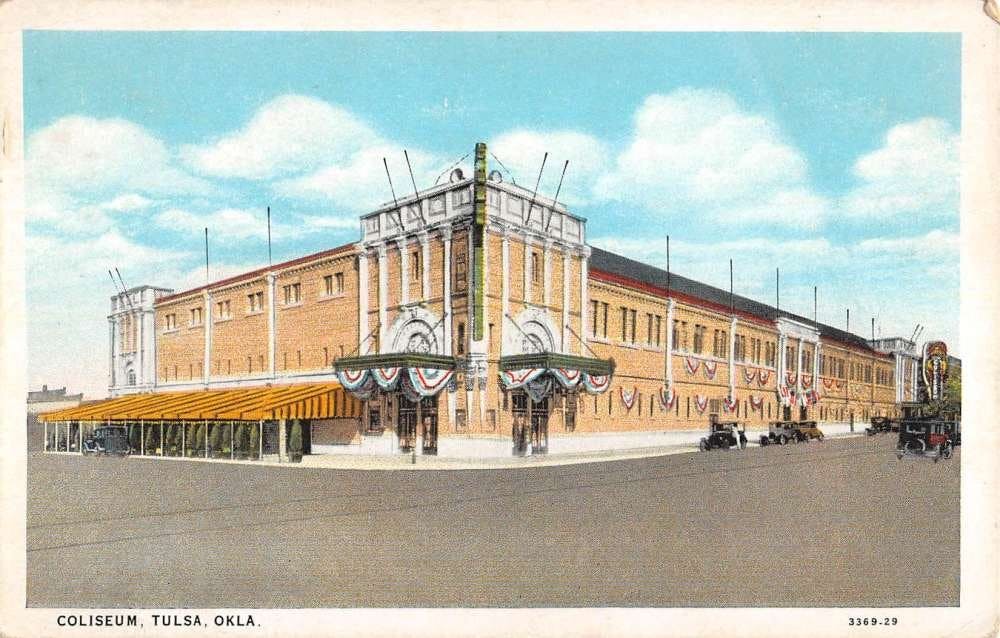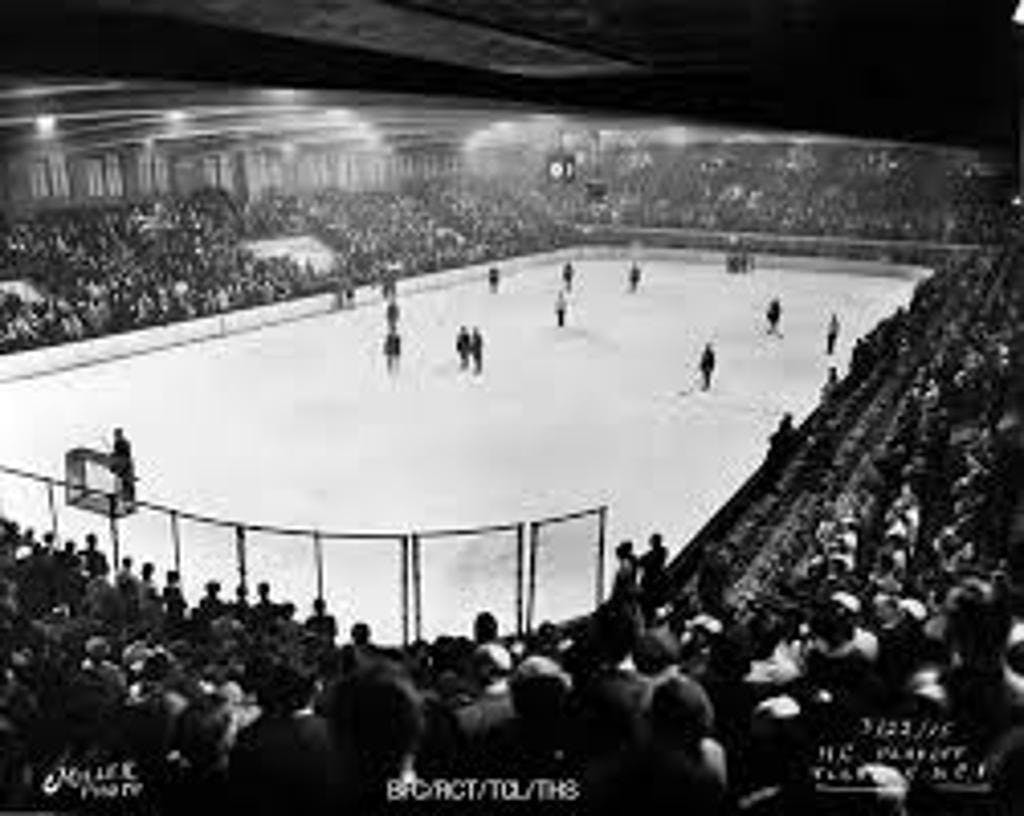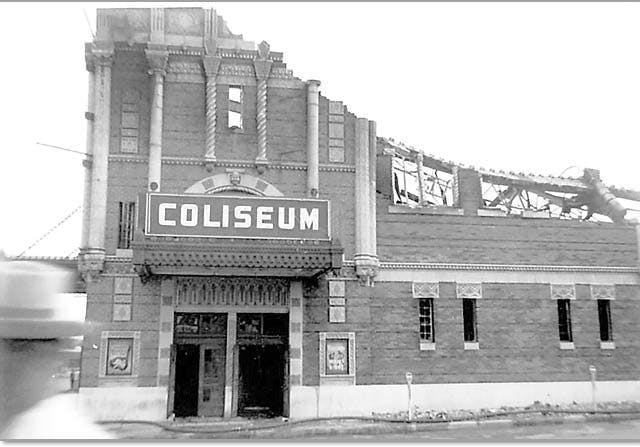The Tulsa Oilers have existed as four separate franchises in five different leagues over their 96-year history. Each team had its own challenges, accomplishments and famous alumni that could rival that of any professional hockey franchise.
The original Oilers team was founded 96 years ago in 1928. The team was an expansion member of the American Hockey Association, a league that was founded in Minnesota, but would become the first pro league to spread into the southern United States. The new kids stunned the league, winning the championship in each of their first three seasons. Perhaps the most interesting player of this era was Burr Williams, a native of Okemah, Oklahoma who went on to play in the NHL for the Detroit Red Wings, St. Louis Eagles and Boston Bruins. The original Oilers franchise ceased operations in 1942 when the AHA folded in response to World War 2.
The Oilers began operations again after the war, this time in the United States Hockey League, a rebranded version of the American Hockey Association. The team was led by Hockey Hall of Famer Clint Smith, who won the USHL MVP. However, Smith couldn’t lead this Oilers team to a championship, despite the team book ending their existence with USHL Finals appearances.
Tulsa hockey remained dormant for 13 years before the Oilers joined the Central Professional Hockey League, which was later shortened to the Central Hockey League. Originally owned by Maple Leaf Gardens Ltd., the Oilers operated as the primary development team for the NHL’s Toronto Maple Leafs. The Oilers’ affiliation led to many great players honing their craft at the Tulsa Assembly Center and the Expo Square Pavilion — the two homes during this era. Before current Tulsa Oilers broadcaster Zack Reynolds donned plaid suits, famed NHL broadcaster Don Cherry wore his own before lacing up his skates for the Oilers. Bill Baker, Dave Silk, Rob “Mack” McClanahan, Steve Janaszak and Bob Suter of Miracle on Ice fame also played for Tulsa. After the Leafs relocated their affiliation to Oklahoma City, the Oilers turned into a farm team for the New York Rangers. Las Vegas Golden Knights General Manager George McPhee played for the team during this period, alongside the NHL’s all-time winningest U.S. born goaltender, John Vanbiesbrouck. All these incredible alumni led the Oilers to three separate Adams Cups as CHL champions. Perhaps the most impressive Adams Cup was earned in 1984, during which, the Oilers folded operations in Tulsa. The league took over operations and the team played the last six weeks of the season on the road. Remarkably, they went on to win the title by sweeping the Indianapolis Checkers in four games.
NHL Iron Man Garry Unger was instrumental in bringing the Oilers back during the reincarnation of the Central Hockey League for the 1992-93 season. Once again the new kids came out on top by winning a championship in their inaugural season — defeating the regular season champion Oklahoma City Blazers in the playoffs. The team has continued operations every year since being founded, despite the CHL collapsing and merging with the ECHL before the 2014-15 season.
The Oilers continued in the ECHL, entering a new era in 2021 when current owner, Andy Scurto, purchased the team. Scurto immediately took to Tulsa, moving his home to Green Country and beginning massive improvements to the franchise. Scurto brought the Tulsa Oilers Football to town, competing in the IFL and also playing at the BOK Center. The shining beacon of Scurto's expansion is the WeStreet Ice Center — a 40,000-square-foot, $35-million-dollar facility. The WeStreet Ice Center brought a full-time practice facility for the Oilers team, while providing the community with two new ice sheets Puck's Sports Bar and Grill — a full-service restaurant and bar with capacity for 400 patrons. WeStreet also serves as the Tulsa Jr. Oilers home and hosts Oklahoma State University hockey as well.
With every franchise winning the championship except for the USHL iteration, the Oilers are one of the most successful professional sports franchises in the history of North America — both in terms of on-ice performance and longevity.










 Adirondack Thunder
Adirondack Thunder
 Allen Americans
Allen Americans
 Atlanta Gladiators
Atlanta Gladiators
 Bloomington Bison
Bloomington Bison
 Cincinnati Cyclones
Cincinnati Cyclones
 Florida Everblades
Florida Everblades
 Fort Wayne Komets
Fort Wayne Komets
 Greensboro Gargoyles
Greensboro Gargoyles
 Greenville Swamp Rabbits
Greenville Swamp Rabbits
 Idaho Steelheads
Idaho Steelheads
 Indy Fuel
Indy Fuel
 Iowa Heartlanders
Iowa Heartlanders
 Jacksonville Icemen
Jacksonville Icemen
 Kalamazoo Wings
Kalamazoo Wings
 Kansas City Mavericks
Kansas City Mavericks
 Maine Mariners
Maine Mariners
 Norfolk Admirals
Norfolk Admirals
 Orlando Solar Bears
Orlando Solar Bears
 Rapid City Rush
Rapid City Rush
 Reading Royals
Reading Royals
 Savannah Ghost Pirates
Savannah Ghost Pirates
 South Carolina Stingrays
South Carolina Stingrays
 Tahoe Knight Monsters
Tahoe Knight Monsters
 Toledo Walleye
Toledo Walleye
 Trois-Rivières Lions
Trois-Rivières Lions
 Tulsa Oilers
Tulsa Oilers
 Utah Grizzlies
Utah Grizzlies
 Wheeling Nailers
Wheeling Nailers
 Wichita Thunder
Wichita Thunder
 Worcester Railers
Worcester Railers